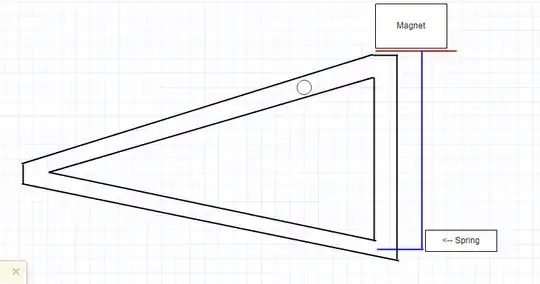The key here is the antimagnetic strip, quite aside from whether or not such a device can be built.
When you insert the anti-magnetic strip, you must change the shape of the magnetic field. You must force the magnetic field to "leave" the high permeability ball. The same magnetic induction $|\vec{B}|$ in a high permeability $\mu$ material represents a lower energy of genesis of the magnetic field $\frac{1}{2\,\mu} |\vec{B}|^2$ than it does in a lower permeability material (magnetic induction is continuous across the magnet's face whatever is outside). So to exclude the magnetic field, you have to do work pushing the antimagnetic strip in. The ball then falls, and you pull the strip out. However now there is no high permeability ball in contact with the strip, so there is little change in the magnetic field configuration when the strip is pulled out, and any work done on the strip as it is withdrawn will be very much less than what you put in to push the strip in. When the ball crashes at the bottom it dissipates the energy that ultimately came from your pushing the antimagnetic strip in as heat, and then the cycle repeats: you have to do the amount of work lost by the ball on crashing inelastically with the ground on the antimagnetic strip at each cycle.
You can, in principle, recover some of the ball's kinetic energy as it hits the ground to help do some of this nett work on the antimagnetic strip by the schematic "tredle" device you show linked to the magnet. However, this is the point at which rob's answer comes in: you might make a lovely art piece that runs for a while, but, if there is any energy loss, anywhere, the machine will stop eventually.
Turning your question around: the ultimate "reason" is that we have never experimentally observed a nonconservation of energy. By experimental induction, therefore, we postulate a principle of conservation of energy and thus the machine cannot work. However, if so, then a theorist can work out what kinds of properties of an antimagnetic strip are physically plausible: only those properties which would demand a net input of energy in the way I describe in my answer are plausible i.e. consistent with overwhelming experimental evidence.
